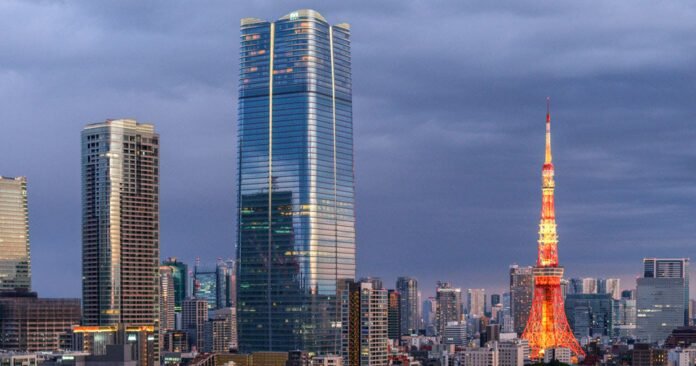Landmark Skyscraper Marks Launch of Azabudai Hills District
Pelli Clarke & Partners (PC&P) has unveiled Mori JP Tower, the tallest building in Japan, as the centerpiece of the brand-new Azabudai Hills district in Tokyo. Soaring 330 meters, the skyscraper becomes a defining element of the Tokyo skyline. Azabudai Hills itself is a massive undertaking — an urban regeneration project over three-decades in the making, and one of the largest private developments in Tokyo’s history. This mixed-use development will transform the city center. See designboom’s previous coverage of the district here.
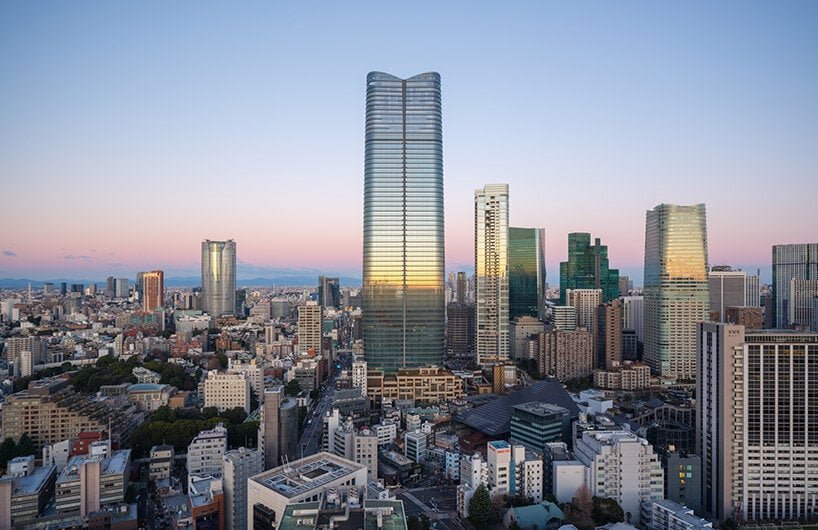 images © Jason O’Rear, Pelli Clarke & Partners
images © Jason O’Rear, Pelli Clarke & Partners
A Collaborative Vision: A Modern Urban Village
The architects at Pelli Clarke & Partners (PC&P) worked in collaboration with leading Japanese developer Mori Building to design the Mori JP Tower within the 8.1-hectare Azabudai Hills district designed by Heatherwick Studio (see more here). Planned as a ‘mixed-use modern urban village,’ Azabudai Hills integrates residences, office space, a hotel, art galleries, a food market, restaurants and retail. The masterplan includes Heatherwick Studio’s first school — the international British School — along with a publicly accessible landscape and an events space. Expected to draw nearly 30 million visitors a year, the district embodies an ambitious vision for the future of Tokyo’s urban renewal.
The Mori JP Tower rises over the Azabudai Hills district with its distinctive pearl-gray glass facade. It is designed to evoke a lotus flower, with a crown featuring four curved glass petals. This unique form creates a new landmark on the Tokyo skyline, and the integrated lighting designed by L’Observatoire International adds another dimension at night. The tower’s form glows, with strands of light drawing from the street to the sky.
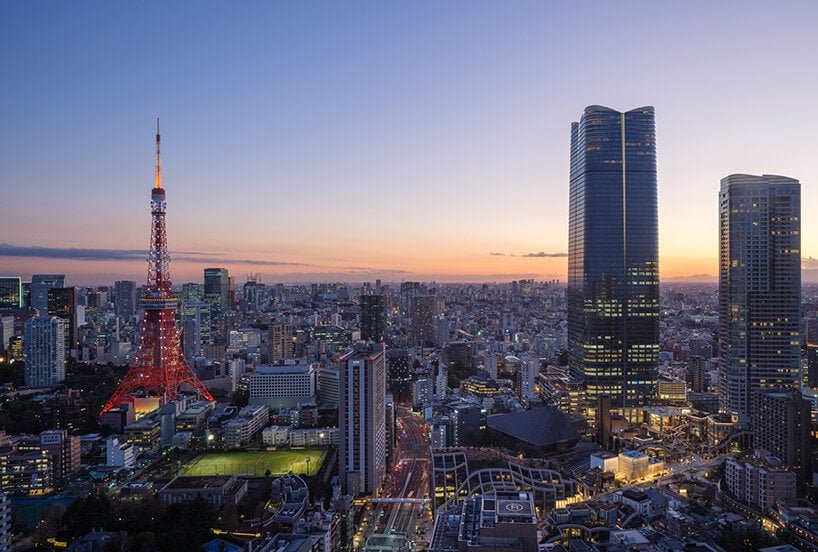
Pelli Clarke & Partners unveil Mori JP Tower, the new king of the Tokyo skyline
Mori JP Tower: Luxury Hospitality and living
The top eleven floors of Mori JP Tower will be home to Aman Residences, Tokyo, a luxury branded experience by global hospitality company Aman. Adjacent to the tower are two additional mixed-use towers, also designed by PC&P. Residence A offers 320 residential units alongside Aman‘s first Janu-branded luxury hotel, Janu Tokyo. Residence B offers a staggering 970 residential units.
Azabudai Hills prioritizes both community and environmental sustainability. At street level, a vibrant mix of public spaces, parks, green spaces, pedestrian paths, retail, and a market hall create a welcoming and accessible environment. One-third of the entire site is dedicated to green space, including an expansive lawn for gatherings and an urban orchard featuring 320 plant varieties.
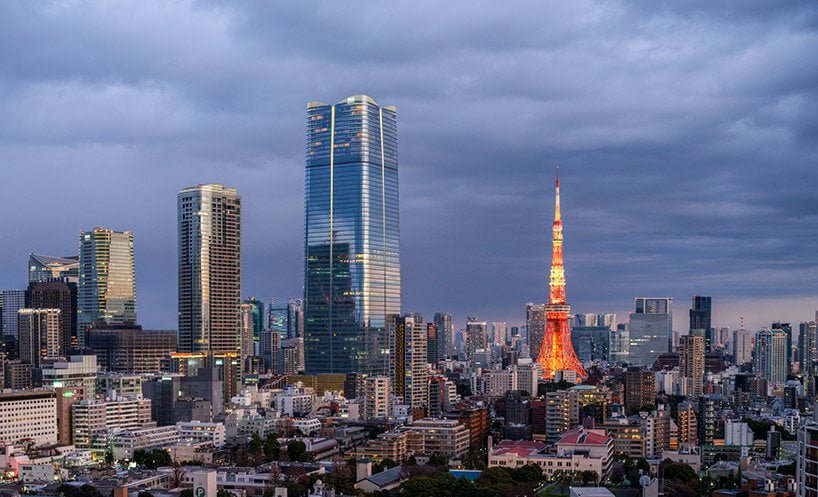
at 330 meters tall, Mori JP Tower is not just the tallest building in Tokyo, but in all of Japan
The inspiration for the ‘Modern Urban Village’ at the base of each tower comes from the area’s geological heritage. This central gathering space features native trees, foliage, and waterscapes. The public realm and lower-level architecture are the work of UK-based Heatherwick Studio (see more here), while the retail space was designed by Japanese architect Sou Fujimoto (see more here).
‘The opportunity to design a city-within-a-city in Tokyo over the past decade has been an honor,’ said Fred Clarke, co-Founder and Partner at PC&P. He highlights the collaborative effort with Mori Building and their focus on creating a ‘progressive, sustainable, and transformative destination.’ PC&P sees Azabudai Hills as respectful of its context, community, and the environment.
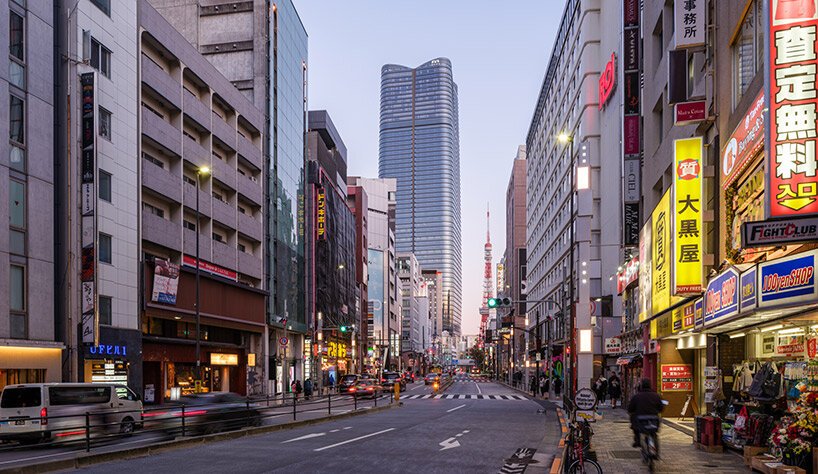
Azabudai Hills, a massive urban renewal project, is the new ‘city-within-a-city’ featuring Mori JP Tower
Environmental considerations are paramount in Azabudai Hills. The development utilizes 100% zero-emission renewable energy, adhering to the international RE100 initiative. Tenants can track their energy source through Mori Building’s Energy Web System. Sustainable technologies throughout the district include using heat from sewage to reduce CO2 emissions. Water conservation measures include rainwater storage and treatment for reuse, wastewater recycling, and water-saving equipment that reduces water usage by 40% compared to the LEED standard. The entire development is designed with resiliency in mind, incorporating earthquake-resistant technologies to ensure safety during seismic events.
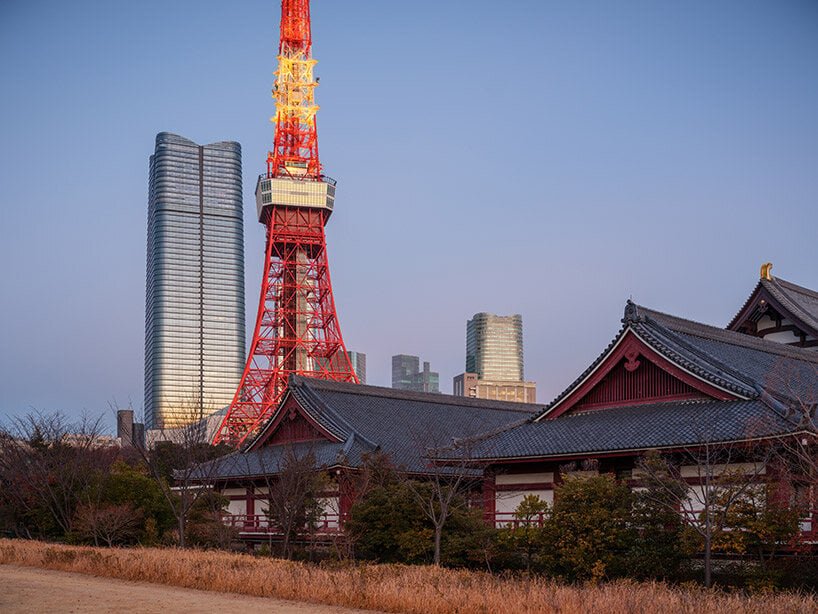
the mixed-use Azabudai Hills includes residences, offices, a hotel, green spaces, and an international school
